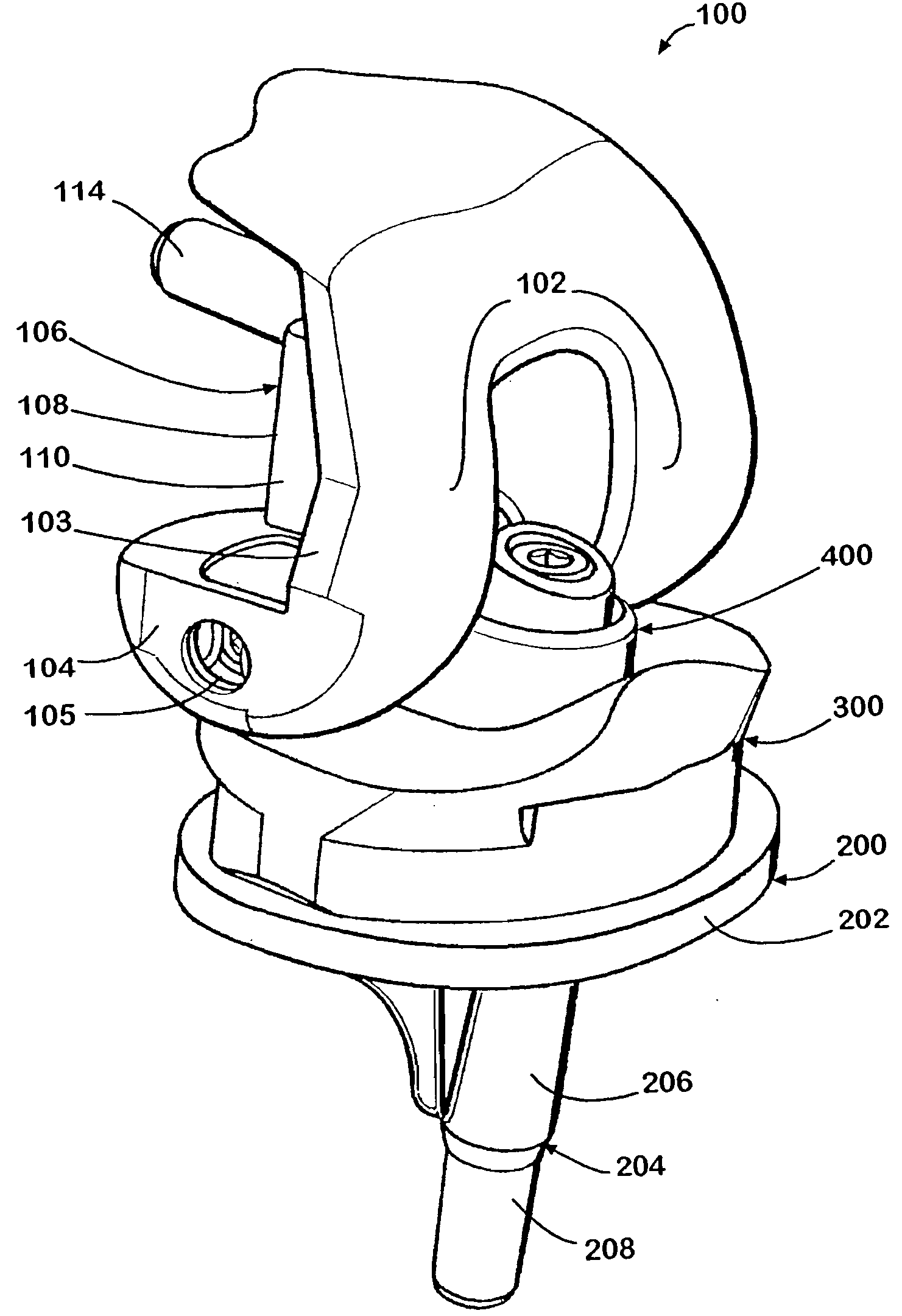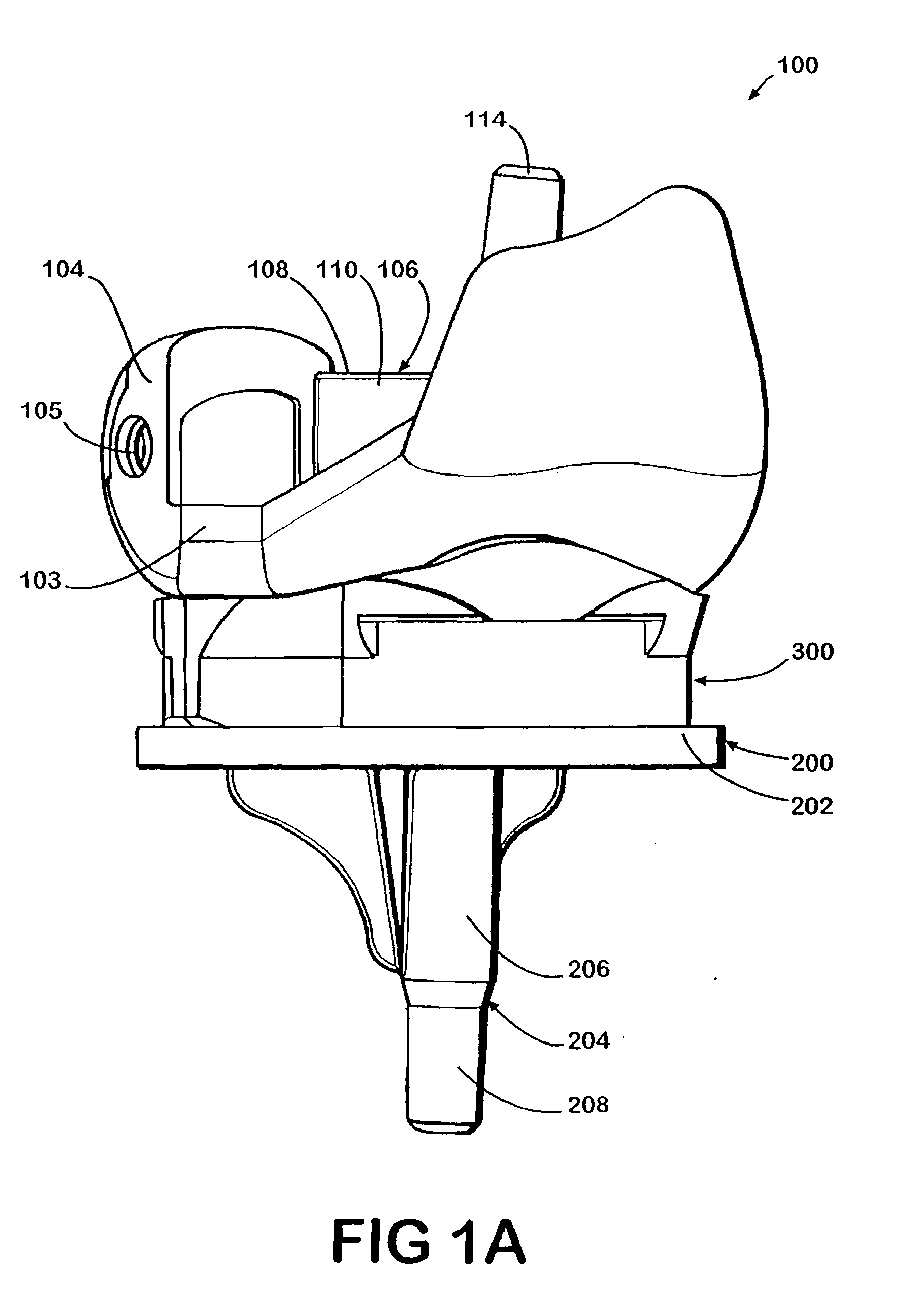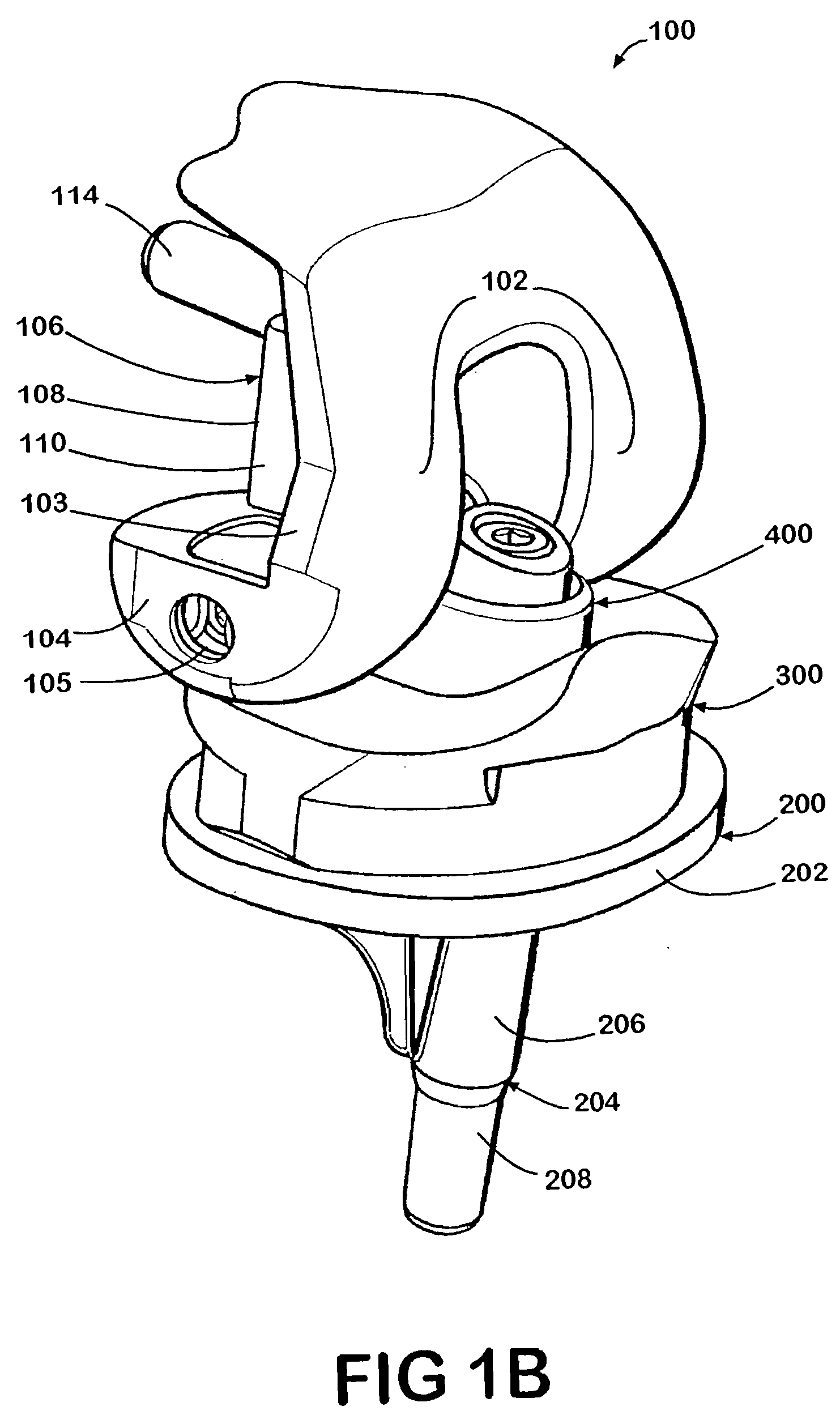Hinged joint system
a joint system and a technology for bending joints, applied in knee joints, medical science, surgery, etc., can solve the problems of not controlling movement and not controlling movement, and achieve the effect of reducing the amount of surgical time devoted
- Summary
- Abstract
- Description
- Claims
- Application Information
AI Technical Summary
Benefits of technology
Problems solved by technology
Method used
Image
Examples
Embodiment Construction
[0028]FIG. 1 illustrates a perspective view of an embodiment of a prosthetic system in extension in FIG. 1A and at 90° flexion in FIG. 1B. FIGS. 2 and 3 show a posterior view and an anterior view, respectively, of an embodiment of the prosthetic system in extension. FIG. 4 shows a top view of an embodiment of the prosthetic system in extension. While the illustrated embodiment is a knee joint, the present invention could be used in other joints, such as a hip joint or a shoulder joint. The prosthetic system includes a femoral component 100, a tibial component 200, a tibial insert 300, and a mechanical linkage component or hinge portion 400. In surgery with the prosthetic system, the tibia and femur are recessed with the intramedullary canals of the tibia and the femur surgically prepared to receive stems. The present invention requires the same bone cuts and instrumentation as a primary or revision system, such as, for example, the Genesis II total knee system from Smith & Nephew. O...
PUM
| Property | Measurement | Unit |
|---|---|---|
| time | aaaaa | aaaaa |
| diameter | aaaaa | aaaaa |
| rotation | aaaaa | aaaaa |
Abstract
Description
Claims
Application Information
 Login to View More
Login to View More - R&D
- Intellectual Property
- Life Sciences
- Materials
- Tech Scout
- Unparalleled Data Quality
- Higher Quality Content
- 60% Fewer Hallucinations
Browse by: Latest US Patents, China's latest patents, Technical Efficacy Thesaurus, Application Domain, Technology Topic, Popular Technical Reports.
© 2025 PatSnap. All rights reserved.Legal|Privacy policy|Modern Slavery Act Transparency Statement|Sitemap|About US| Contact US: help@patsnap.com



